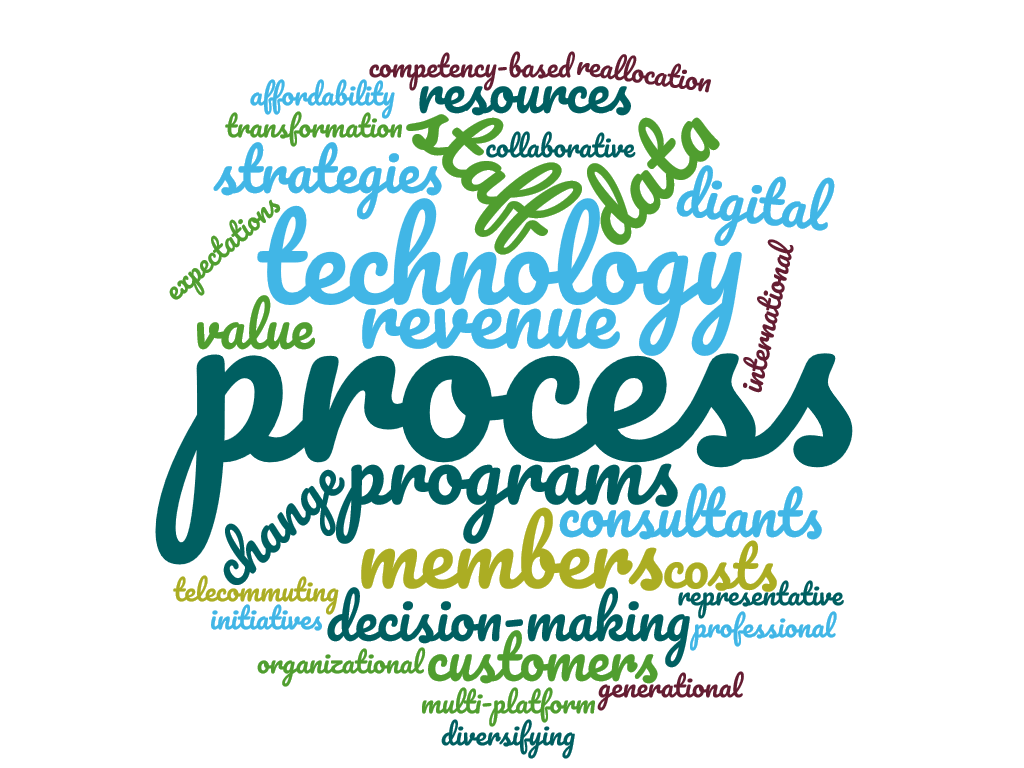One of the things that we benefit from as consultants working with multiple and diverse clients is the ability to identify association trends. We identify trends as a change in progress and the direction of that change.
Every now and then, we sit down and identify the trends we are seeing across associations. We want to share what we see. Are you seeing the same thing? This is the second part of a three part series that will identify structural trends, process trends and what we see as emerging trends.
Across the board, the most significant trends impacting associations are occurring at the confluence of shifting demography and evolving technology.
Process Trends
Strategy
- Increasingly improving the value (content and experience) of an association’s offerings as the focus of innovation.
- Re-emphasis on deeper connection and lasting community as an association’s distinguishing competitive advantage.
- Increased emphasis on the association’s role in influencing the profession or industry in addition to improving the association as an enterprise.
- Others?
Research
- Increased use of both marketplace and membership marketing research.
- More associations using qualitative research for strategy and innovation and quantitative research for creating policy and benchmarking.
- More “do it yourself” survey and data analytic tools being employed by association staff.
- Increased use of polling as a data collection tool providing immediate results and an opportunity to engage members.
- Others?
Policy
- Continued customized adaptation of policy governance and/or knowledge-based governance.
- Decreased attention to maintaining policy systems as a tool for documenting public and/or operational board policy; diminished institutional memory of decisions already made.
- Increased scrutiny of “the wisdom of the masses“ as a policy determinant for associations.
- Others?
Resource Allocation
- In the not for profit sector, technology is creating/redefining jobs (more expense); in for-profit sector, technology is replacing/redefining jobs (fewer dues paying members).
- More pressure to meaningfully tie budgets to strategy and measures of ROI (return on investment).
- Less reluctance to stop doing existing programs or replacing traditional products/services.
- Others?
Last Week: Structural Trends
Next week: Emerging Trends


